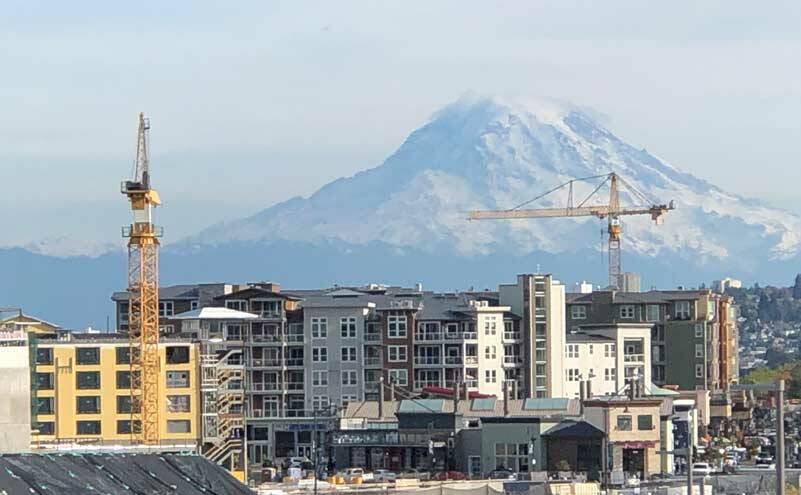By Morf Morford
Tacoma Daily Index
You don’t have to be a statistician or a policy analyst or a traffic observer to come to the conclusion that our population, local and statewide, has been changing dramatically.
Pierce County, as you can see below, has grown from a little over half a million in 1990 to just under a million in 2020.
Which means that Pierce County’s growth is approximately equivalent to the combined 2020 populations of Kitsap and Mason Counties.
And, if trends continue, Pierce County should easily surpass one million.
Voting with our feet
Population growth, like everything else in life, from freckles to dandelions, is not distributed equally.
To put it mildly, a lot can happen in thirty years.
Based on these numbers, only one county in Washington has declined in population; Columbia, while four counties have barely nudged in their population totals; Ferry, Garfield, Lincoln and Wahkiakum.
King County, as we would expect, grew the most; about 750,000. That would be as if more than 90% of Pierce County in 2010 moved to King County.
You can see population numbers for each of the 39 counties in Washington thanks to US Census numbers from 1990, 2000, 2010 and 2020 here – https://www.citypopulation.de/php/usa-washington.php?.
1990 2000 2010 2020
Adams County 13,603 16,428 18,728 20,613
Asotin County 17,605 20,551 21,623 22,285
Benton County 112,560/ 142,475/ 175,177/ 206,873
Chelan County 52,250 66,616 72,453 79,074
Clallam County 56,464 64,525 71,404 77,155
Clark County 238,053 345,238 425,363 503,311
Columbia County 4,024 4,064 4,078 3,952
Cowlitz County 82,119 92,948 102,410 110,730
Douglas County 26,205 32,603 38,431 42,938
Ferry County 6,295 7,260 7,551 7,178
Franklin County 37,473 49,347 78,163 96,749
Garfield County 2,248 2,397 2,266 2,286
Grant County 54,758 74,698 89,120 99,123
Grays Harbor County 64,175 67,194 72,797 75,636
Island County 60,195 71,558 78,506 86,857
Jefferson County 20,146 25,953 29,872 32,977
King County 1,507,319/ 1,737,034/ 1,931,249/ 2,269,675
Kitsap County 189,731/ 231,969/ 251,133/ 275,611
Kittitas County 26,725 33,362 40,915 44,337
Klickitat County 16,616 19,161 20,318 22,735
Lewis County 59,358 68,600 75,455 82,149
Lincoln County 8,864 10,184 10,570 10,876
Mason County 38,341 49,405 60,699 65,726
Okanogan County 33,350 39,564 41,120 42,104
Pacific County 18,882 20,984 20,920 23,365
Pend Oreille County 8,915 11,732 13,001 13,401
Pierce County 586,203/ 700,820/ 795,225/ 921,130
San Juan County 10,035 14,077 15,769 17,788
Skagit County 79,555 102,979 116,901 129,523
Skamania County 8,289 9,872 11,066 12,036
Snohomish County 465,642/ 606,024/ 713,335/ 827,957
Spokane County 361,364/ 417,939/ 471,221/ 539,339
Stevens County 30,948 40,066 43,531 46,445
Thurston County 161,238/ 207,355/ 252,264/ 294,793
Wahkiakum County 3,327 3,824 3,978 4,422
Walla Walla County 48,439 55,180 58,781 62,584
Whatcom County 127,780/ 166,814/ 201,140/ 226,847
Whitman County 38,775 40,740 44,776 47,973
Yakima County 188,823/ 222,581/ 243,231/ 256,728
Washington State total population has changed on about the same trajectory; 4,866,692 in 1990, 5,894,121 in 2000, 6,724,540 in 2021 and 7,705,281 in 2020.
(Data from https://www.citypopulation.de/php/usa-washington.php?)
Meanwhile, in Pierce County
Town and city populations within Pierce County have a similar asymmetric distribution pattern, with some communities exploding in growth while others are relatively stable.
The city of Dupont wins the prize for the most exponential growth; 590 in 1990 to over 10,000 in 2020.
The city of Roy more than doubled; 384 in 1990 to 816 in 2020.
The city of Fircrest grew by a little over 1,000 (1,323 to be precise) That’s about 44 people per year, over 30 years.
The town of Ruston grew from 694 in 1990 to 1,055 in 2020. Pt. Ruston is expected to have a total population of around 3,000, but apparently most, if not all of those numbers are within the city of Tacoma.
You can see the details on other municipalities throughout Pierce County here – https://www.citypopulation.de/php/usa-washington.php?adm2id=53053
As you might guess, population shifts everything from zoning guidelines to housing prices and traffic patterns to political re-districting.
Whether these population/demographic trends continue in these same directions is anyone’s guess.
The old saying about population is that people follow jobs, but with more people working from home, cultural attractions of urban centers and increasing crime in both rural and urban areas, along with variability in home prices, population distribution as recorded in the next census should hold some interesting surprises.
We vote with our ballots, but more deliberately, we vote with our feet and our wallets.





